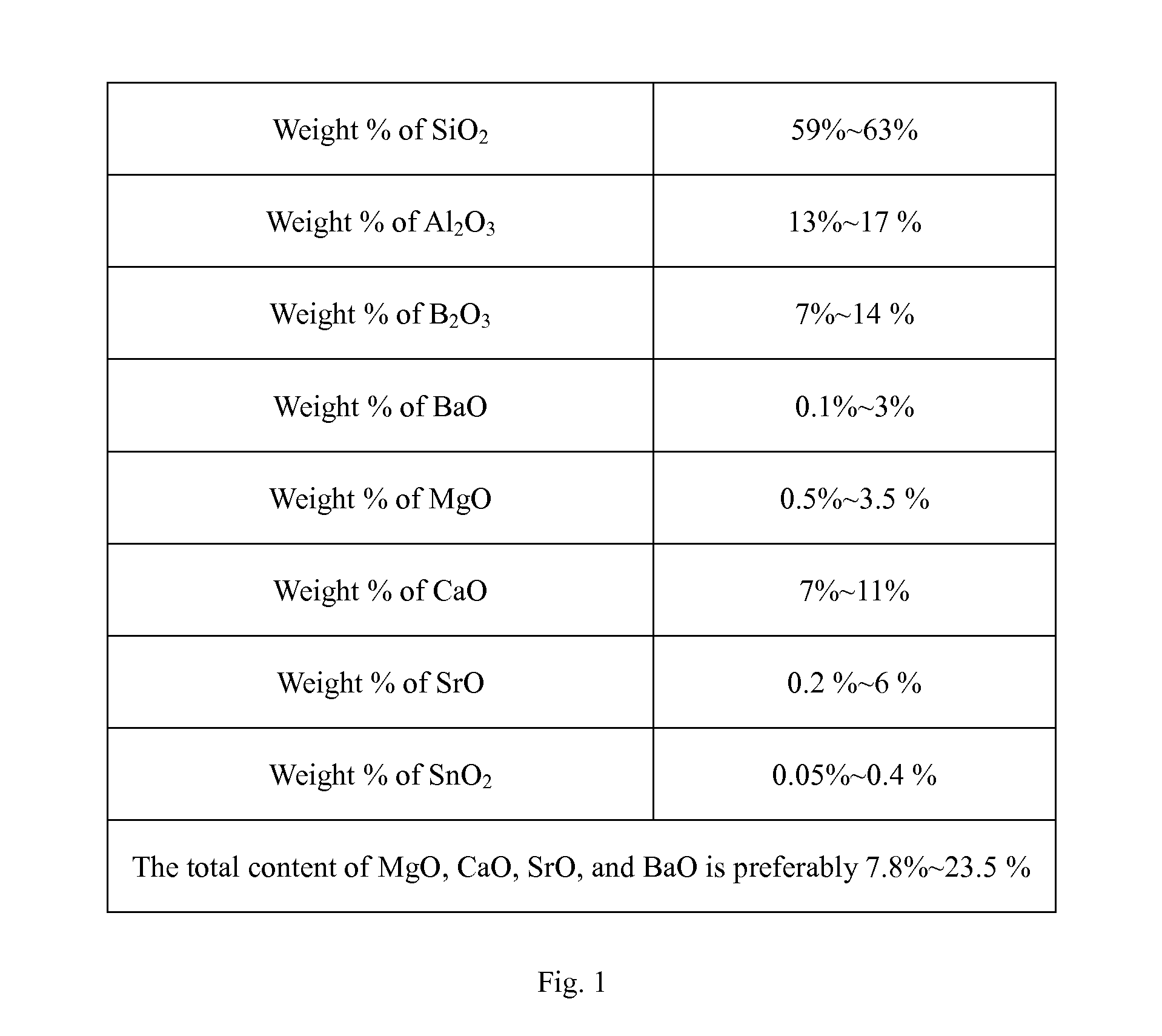Constitution of Environment-Friendly Glass for TFT-LCD
a technology of environment-friendly glass and liquid crystal display, which is applied in the direction of optics, non-linear optics, instruments, etc., can solve the problems of change of stress distribution inside glass, difficult melting, forming of glass, and forming of glass, so as to achieve strong structure and devitrification resistance
- Summary
- Abstract
- Description
- Claims
- Application Information
AI Technical Summary
Benefits of technology
Problems solved by technology
Method used
Image
Examples
Embodiment Construction
[0015]The present invention is mainly to provide a constitution of environment-friendly glass for TFT-LCD, the materials of which consist in terms of weight % on the oxide basis of:[0016](1) SiO2, 59%˜63.0%;[0017](2) Al2O3, 13.0%˜17.0%;[0018](3) B2O3, 7%˜14%;[0019](4) BaO, 0.1%˜3%;[0020](5) MgO, 0.5%˜3.5%;[0021](6) CaO, 7%˜11%;[0022](7) SrO, 0.2%˜6%;[0023](8) SnO2, 0.05%˜0.4%[0024](9) wherein the total contents of CaO, BaO, MgO and SrO is preferably 7.8%˜23.5%.
[0025]According to the present invention, as the weight percent of each constituent according to its physical properties will place impact of different degree on the characteristic, structure and production of environment-friendly TFT-LCD glass, it is necessary to place limitation on the weight percent of each constituent, among which, SiO2, Al2O3, and B2O3 share major parts of the weight percents and play important roles on the characteristic, structure and production of glass substrate. Therefore, the three constituents are ...
PUM
| Property | Measurement | Unit |
|---|---|---|
| liquidus temperature | aaaaa | aaaaa |
| temperature | aaaaa | aaaaa |
| liquidus temperature | aaaaa | aaaaa |
Abstract
Description
Claims
Application Information
 Login to View More
Login to View More - R&D
- Intellectual Property
- Life Sciences
- Materials
- Tech Scout
- Unparalleled Data Quality
- Higher Quality Content
- 60% Fewer Hallucinations
Browse by: Latest US Patents, China's latest patents, Technical Efficacy Thesaurus, Application Domain, Technology Topic, Popular Technical Reports.
© 2025 PatSnap. All rights reserved.Legal|Privacy policy|Modern Slavery Act Transparency Statement|Sitemap|About US| Contact US: help@patsnap.com

